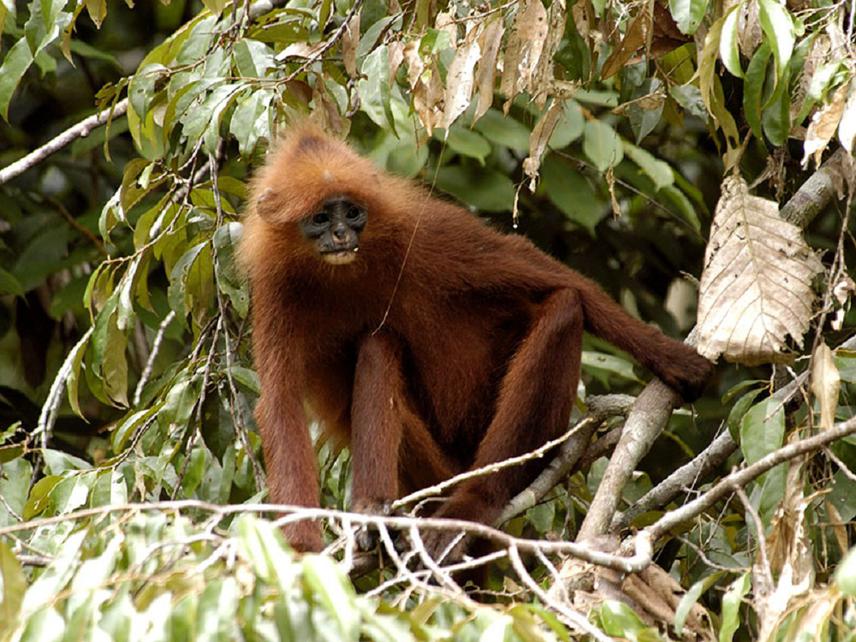Sugi Sugianto
The conservation aim of this research is to allow for the monitoring of primate populations in the Sungai Wain Protection Forest, and a proposed extension of this reserve, in East Kalimantan, Indonesian Borneo. The results of the present survey will be compared with those of past studies in order to assess changes in population density over time, as well as compare population numbers among groups living in unprotected and protected forest, as well as a comparison of areas affected by fires and primary forest to investigate the regeneration potential of primate populations surviving in burned over areas.

Red langur.
The Sungai Wain Protection Forest is a remarkable forest close to Borneo’s 4th largest city, Balikpapan. About half the forest is still primary coastal lowland dipterocarp rainforest with populations of all the forest species that would be expected there. About 40% of the forest was burnt during the massive fire disaster of 1998, but since then fires have been kept out of the reserve, and the forest has been regenerating. However, about 830 ha burned again during the 2015 El Niño event.
We are surveying the populations of 3 protected primate species, endemic to Borneo, that live in and around the Sungai Wain forest. These species are Müller’s gibbon (Hylobates muelleri), the relatively rare white-fronted langur (Presbytis frontata), and the more common red langur (Presbytis rubicunda). In the IUCN Red Data Book, the first is classed as Endangered, the second as Vulnerable, and the last as Least Concern, although this may be uplisted to become also Vulnerable in the near future.
The densities of these 3 species have previously been studied in Sungai Wain (since 2000) and by using the same methodologies, it will be possible to determine how these species are doing currently compared to previous population estimates.
Gibbon populations will be surveyed using triangulation between 3 listening posts, while the langurs will be surveyed through observations along transects.
The surveys will be carried out not only in the primary forest core of Sungai Wain, but also in the areas that were burned in 1998, but have been recovering since, the area burned again in 2015, and an area of unprotected forest that is proposed as an extension to the Protection Forest. By comparing data from the forest burnt in 1998 with previously collected data, it will also be possible to see to what extent regeneration of previous burned forest has allowed increase use by these primates.
There is obviously the potential to monitor the local populations these three primate species over a long time period, which is rarely done.